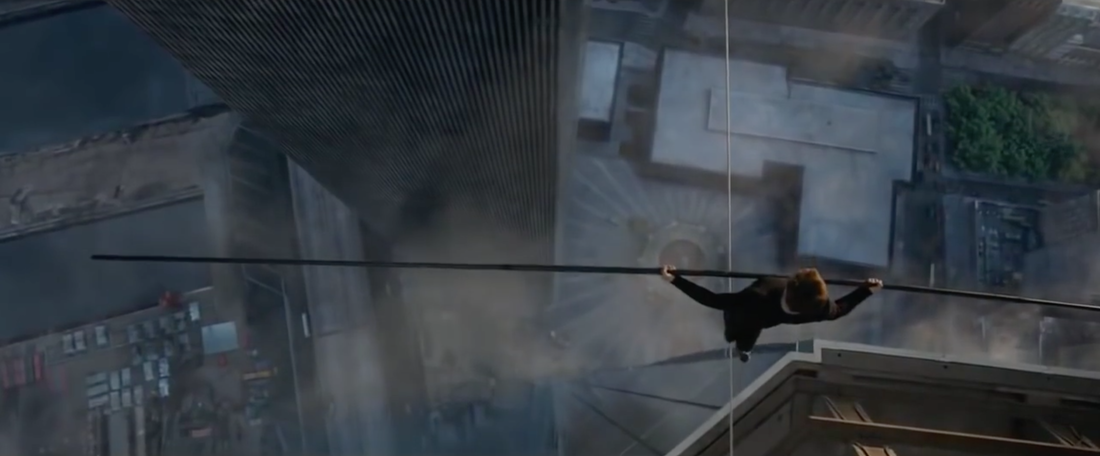Robert Zemeckis’ new film, The Walk, seeks to answer these baffling questions. The film is a biographical account of French high-wire artist Philippe Petit’s (played by Joseph Gordon-Levitt) successful walk between the World Trade Center towers in August of 1974, which has since been famously named “the artistic crime of the century.” The film follows Petit’s personal journey, from a young aspiring tightroper to training as a wire walker to the massive planning to accomplish his dream of traversing the void between the two tallest buildings in the world (in 1974).
The main theme of Zemeckis’ film is discovering and appreciating the sheer artistic beauty ingrained in Petit’s act. Although Petit’s walk was a crime (and he was arrested shortly afterwards), the film extols his walk as the best type of crime a person could commit, as no innocent civilians were harmed, no property was damaged, and Petit gave himself up willfully and peacefully at the end of the act. Virtually any other crime involves a negative variation of one or more of those characteristics.
As mentioned earlier, the film also investigates the meaning behind Petit’s walk. For Petit, the walk was a transcendent experience, something that allowed him to see the world in a whole new light, as during the act he noted that all the city noise faded away and all he could see was his wire. Furthermore, in the film he states, “People ask me ‘Why do you risk death?’ For me, this is life.” Tightroping, besides being a symbol of liberation for Petit, was also the way he perceived fully living as a human, as something that gives you an in-moment experience that is indescribable unless you do it yourself. A possible comparison for this would be surfing inside of a wave, which surfers will tell you is something you have to experience for yourself, rather than them trying to describe it to you.
The Walk, besides serving as a homage to Petit’s incredible act, also serves to honor the World Trade Center towers’ existence from 1974-2001. As is briefly noted in the film, the towers were initially widely perceived as an eyesore by the public, some even mocking that they resembled “giant filing cabinets.” However, Petit’s walk, which occurred a couple months before the buildings’ official opening, ultimately served as a christening for the towers, giving them a soul, along with a new respect from the public and widely shifting opinions on their architectural beauty.
Technically speaking, Zemeckis more than succeeds in resurrecting the twin towers, as the CGI is one of the main selling points of the film. But more importantly, Zemeckis also brought Petit’s walk to life by giving audiences a first-hand view of his experience walking between the towers. During the act, the camera predominantly stays alongside Petit, and often looks down the 1,362 feet to the concrete bottom. Other artistic works that have been produced on Petit’s walk, including the acclaimed documentary Man on Wire (Marsh, 2008) have failed to effectively put audiences in Petit’s point-of-view. But, alas, Zemeckis does not disappoint. Whether you are afraid of heights or not, more than likely your palms will be sweating during the film’s final act.




 RSS Feed
RSS Feed
